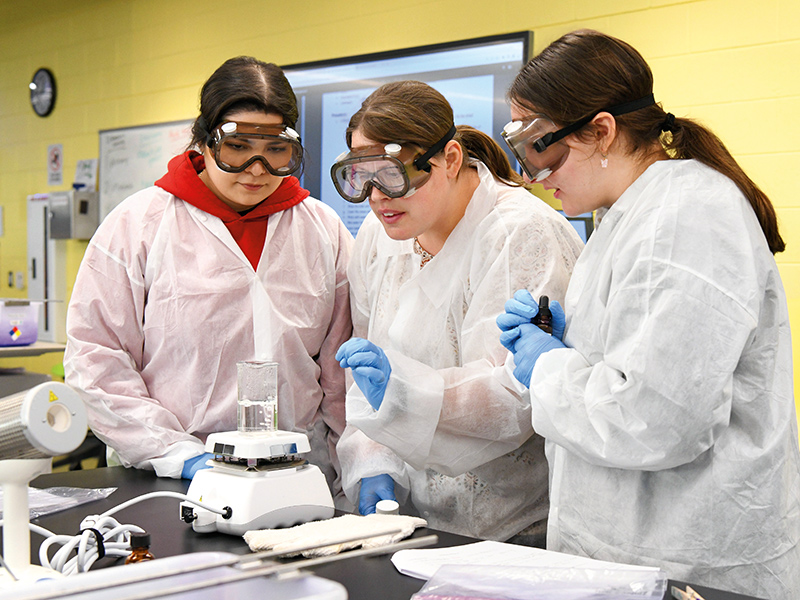A new home for the sciences
June 25, 2024

In a move to spark excitement and creativity around the sciences, Aurora University moved all of its science courses under one roof into high-tech, open classrooms that give students hands-on experiences in cutting-edge labs.
AU designated John C. Dunham Hall as the home of its new science labs for biology, chemistry, exercise science, health and wellness, health science, physics, pre-health professions, and science education. Previously, the labs had been housed on different floors and in buildings across campus.
“The intent is to have collaborations between several programs and inspire students to see the connections within areas of science as well as between science and health-track professional programs,” said Chetna Patel, Smith distinguished chair in science and mathematics, chair of biology and physical sciences, and professor of chemistry. “Many labs are visible so students can see what’s taking place inside the classes. The spaces allow for students to get curious and ask questions and for faculty to collaborate.”
Thanks to several Illinois Mathematics and Science Partnerships Program grants over the years, AU boasts an array of professional, high-quality scientific equipment that students can experience before they enter the workforce or pursue advanced degrees. Moving the sciences under one roof also allows the university to be more intentional about having first- and second-year students gain experience with the types of equipment they will encounter in the workplace, starting in their lower-level labs rather than waiting until their junior and senior years.
Training on cutting-edge equipment
In recent years, AU has acquired professional-level scientific equipment that students will encounter when they enter the workforce or continue on to advanced studies:
- High-pressure liquid chromatography (HPLC), atomic absorption (AA), and powder X-ray diffraction (PXRD) instruments for analyzing materials
- Lifelike synthetic human models
- Anatomage tables that provide 3D, interactive digital images of anatomy
- Vernier probeware to measure temperature, pH, conductivity, and radiation
- Bioinstrumentation including a polymerase chain reaction (PCR) machine, fluorescent microscope, and high-speed refrigerated centrifuge
- Two fume hoods for cell culture research
“The healthcare field is among the fastest-growing professions and the largest source of jobs in the U.S.,” said Sarah Radtke, dean of the College of Health and Sciences. “That is why we have been so mindful about providing the most current technology and experiences for our students. We want to get them excited about and prepared for their future careers.”
This story is an excerpt from the spring/summer 2024 issue of AU Magazine. Click here to read the full issue.